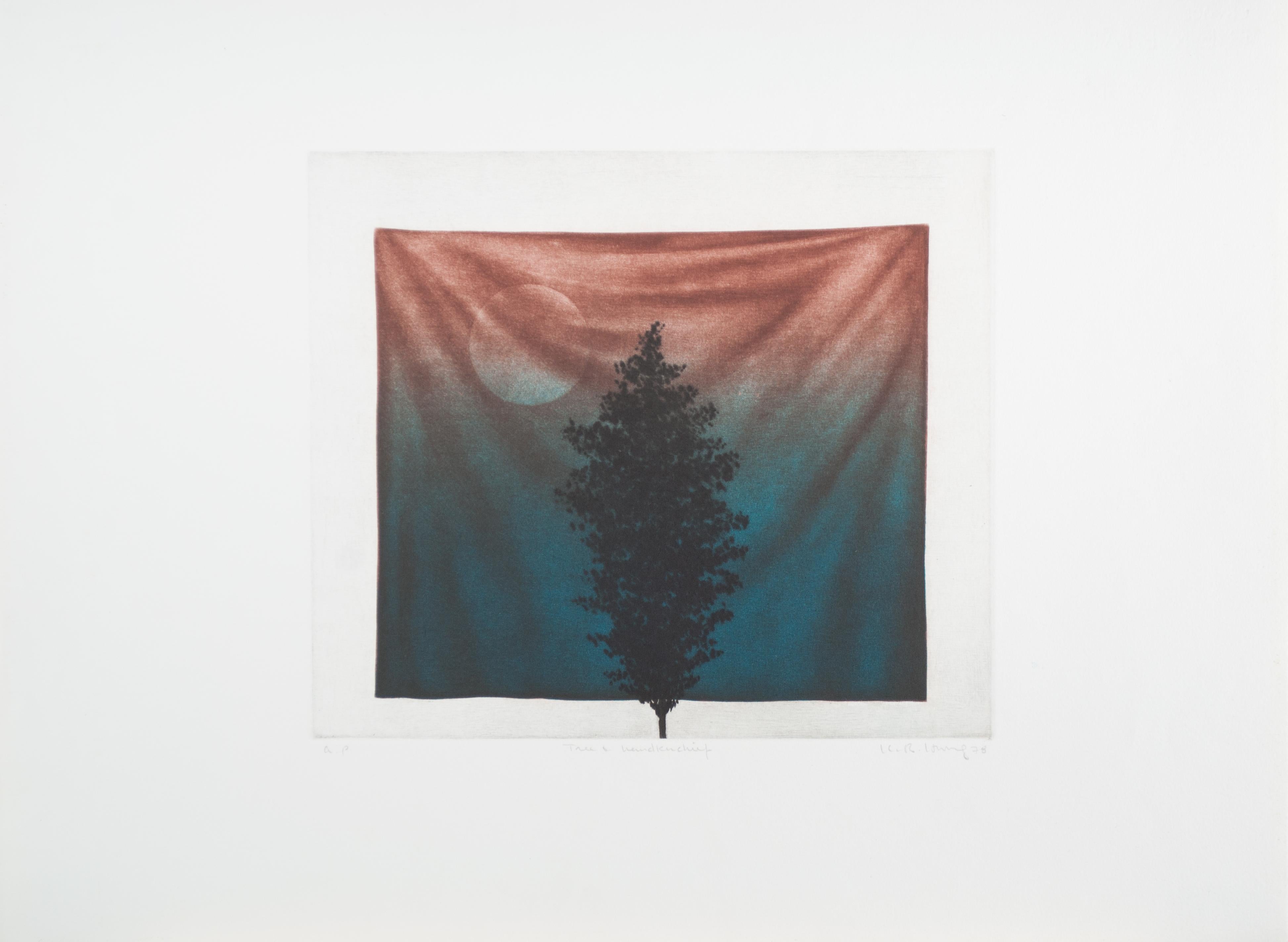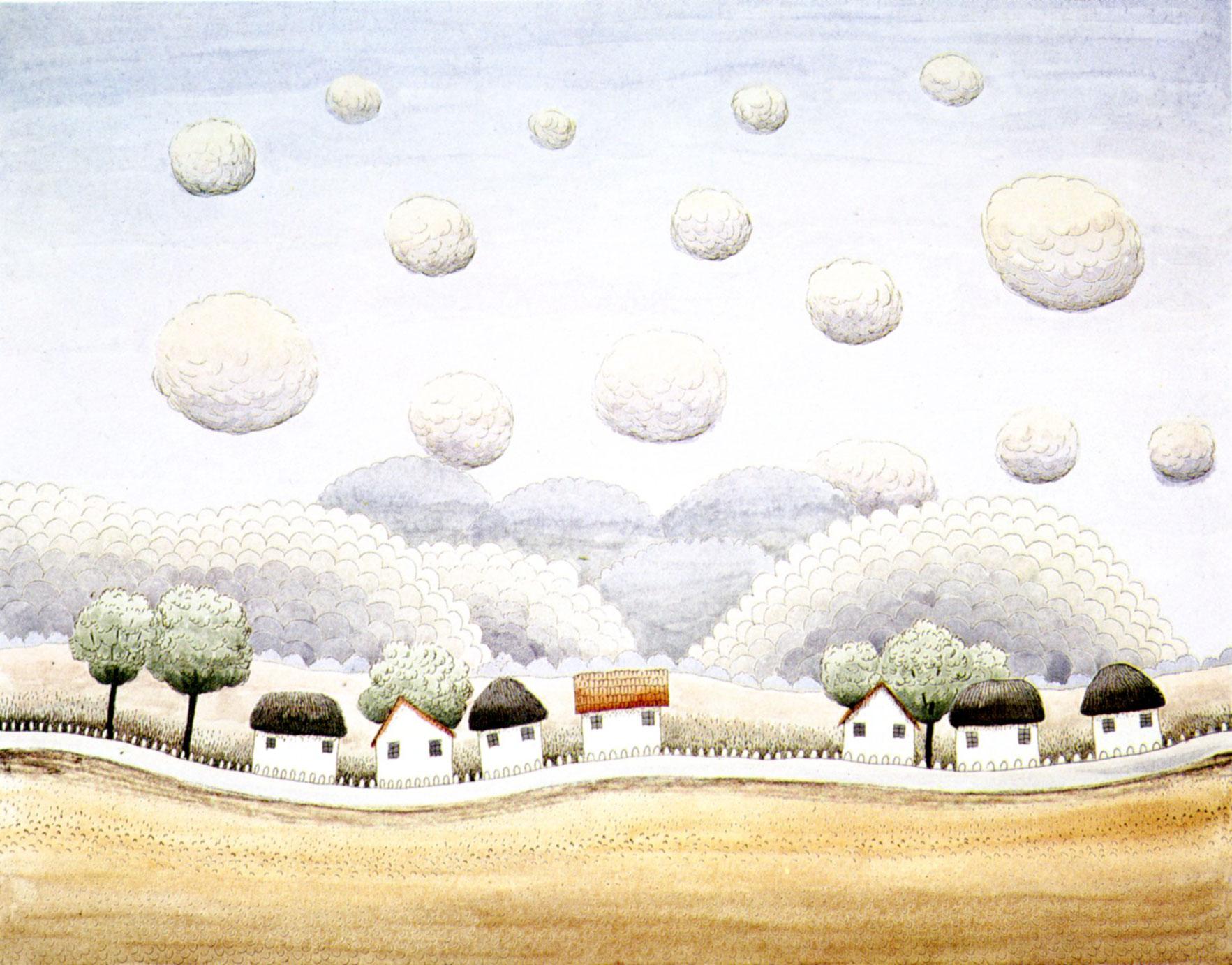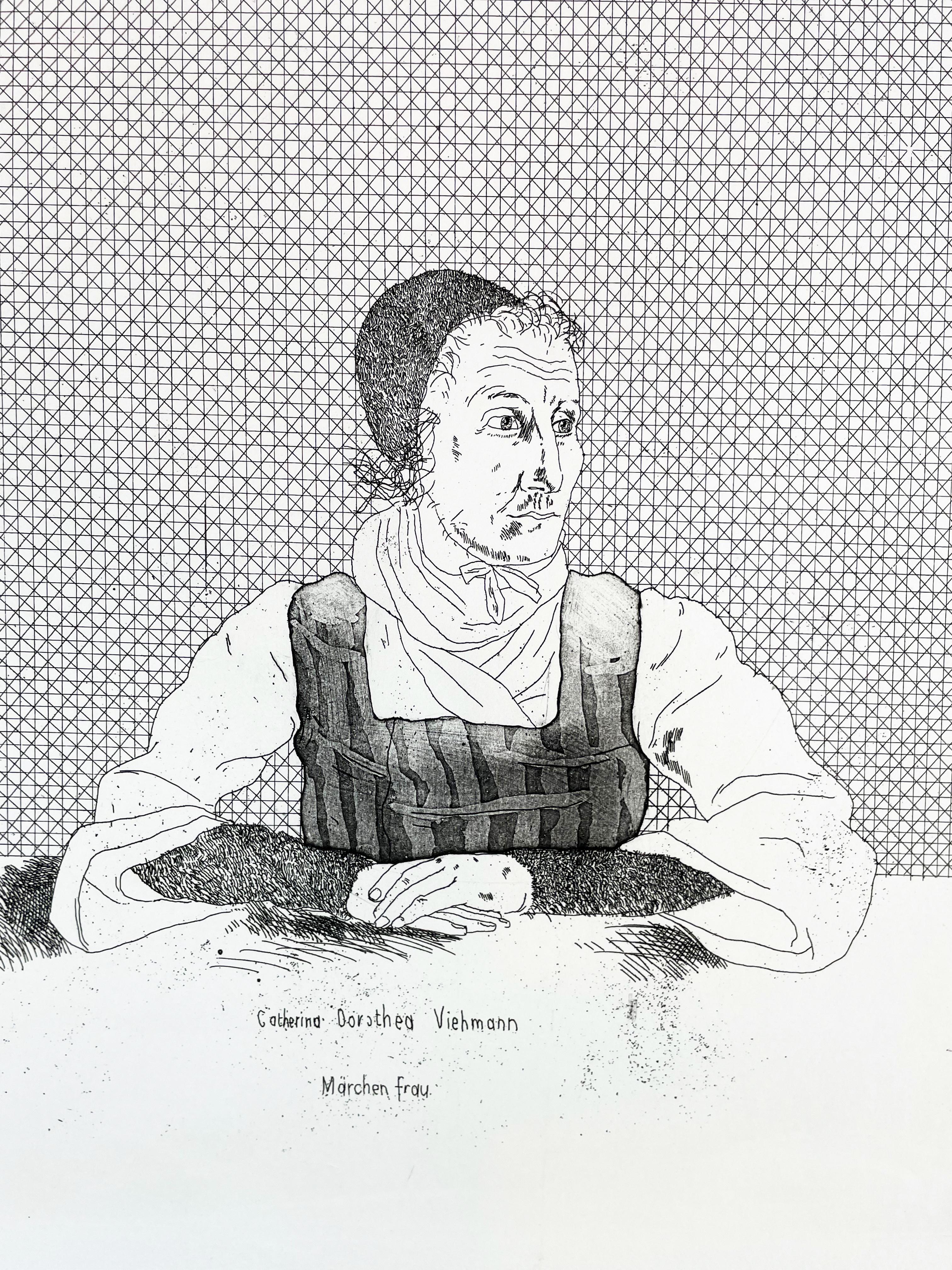Items Similar to Worcester College, Oxford lithograph by Richard Beer
Want more images or videos?
Request additional images or videos from the seller
1 of 8
Richard BeerWorcester College, Oxford lithograph by Richard Beer
About the Item
To see our other Modern British Art, scroll down to "More from this Seller" and below it click on "See all from this Seller" - or send us a message if you cannot find the artist you want.
Richard Beer (1928 - 2017)
Worcester College, Oxford
Etching and aquatint
44 x 59 cm
Titled and numbered 77/100 and signed lower right, all in pencil.
The artist's view of Worcester College's facade, with the hall projecting on the left and the college chapel on the right. Beer's ability to capture the unique texture of Oxford's old stone is manifest.
Born in London in 1928, just too late to serve in the Second World War, Richard Beer studied between 1945 - 1950 at the Slade School. Subsequently, a French Government scholarship allowed him to spend time in Paris at Atelier 17, working under Stanley William Hayter (1901 - 1988), one of the most significant print makers of the 20th Century – having spent the War in New York, advising as a camofleur, Hayter only returned to Paris in 1950. Subsequently Beer studied at the École des Beaux Arts, Paris.
Working for John Cranko, choreographer for the Royal Ballet, Beer designed the sets and costumes for his The Lady and the Fool at Covent Garden, subsequently working for him following his move in 1961 to Stuttgart Ballet. Additionally he produced book illustrations and designed book jackets.
Beer later taught print-making at the Chelsea School of Art, where he was a popular teacher. Probably his greatest work was a collaboration with John Betjeman to produce a portfolio of prints of ten Wren Churches in the City for Editions Alecto, copies of which are in The Government Art Collection. That collection contains a total of 54 prints by Beer, and the Tate Gallery’s collection holds seven. His Oxford series was also produced for Editions Alecto as was a series of predominantly architectural views in Southern Europe. Most of his prints are of architectural subjects.
- Creator:Richard Beer (1928, British)
- Dimensions:Height: 4,820.48 in (12,244 cm)Width: 23.23 in (59 cm)
- Medium:
- Period:
- Framing:Framing Options Available
- Condition:Generally very good; slight age toning to paper and to margins.
- Gallery Location:London, GB
- Reference Number:1stDibs: LU795314139742
About the Seller
4.8
Gold Seller
These expertly vetted sellers are highly rated and consistently exceed customer expectations.
Established in 2014
1stDibs seller since 2017
282 sales on 1stDibs
Typical response time: <1 hour
- ShippingRetrieving quote...Ships From: London, United Kingdom
- Return PolicyA return for this item may be initiated within 14 days of delivery.
More From This SellerView All
- Julian Trevelyan Gravesend Etching Modern British Art London Print UK ThamesBy Julian TrevelyanLocated in London, GBWe have seven of Julian Trevelyan's 'Thames Suite' of prints, plus other prints and oil paintings by him - and other Modern British Artists. To see the others, scroll down to "More f...Category
1960s Modern Figurative Prints
MaterialsEtching, Aquatint
- 1804 St George's Chapel Windsor Castle printBy Frederick NashLocated in London, GBFrom a series of large and impressive prints of St George's Chapel, the location for the Royal Wedding of Prince Harry and Meghan Markle; to see some ...Category
Early 1800s Realist Landscape Prints
MaterialsEtching, Aquatint
- Florence Ponte Vecchio etching by Valerie ThorntonLocated in London, GBTo see more, scroll down to "More from this Seller" and below it click on "See all from this Seller." Valerie Thornton (1931 - 1991) Ponte Vecchio, Florence (1972) Etching and aqua...Category
1970s Abstract Landscape Prints
MaterialsEtching, Aquatint
- Louise Ibels: Arles Roman Theatre - Etching and AquatintBy Louise IbelsLocated in London, GBLouise Ibels (1891-1965) 'Théâtre Antique à Arles' Etching and aquatint Signed and titled in pencil to margin 3rd state proof Approx. 39 x 25cm (plate...Category
Mid-20th Century Modern Landscape Prints
MaterialsEtching, Aquatint
- The Merry Beaglers restrike aquatint by John Harris after Harry HallBy John Harris the YoungerLocated in London, GBJohn Harris after Harry Hall The Merry Beaglers Restrike print - c. mid twentieth century 48x65cm Aquatint with hand colouring The most famous beagling...Category
Mid-20th Century Victorian Landscape Prints
MaterialsAquatint
- Richard Beer Christ Church Newgate St London Wren signed print 1970 etchingBy Richard BeerLocated in London, GBTo see our other views of Oxford and Cambridge, or Modern British Art, scroll down to "More from this Seller" and below it click on "See all from this Seller" - or send us a message ...Category
1960s Modern Landscape Prints
MaterialsEtching, Aquatint
You May Also Like
- Tree & HandkerchiefBy K.B. (Kyu-Baik ) HwangLocated in Ljubljana, SITree & Handkerchief. Original color aquatint and etching, 1978. Edition of A.P. (artist’s proof) signed and numbered impressions on Arches paper. Kyu-Baik Hwang is contemporary painter and printmaker, from South Korea. He served in the military during the Korean War, and after the war he began to paint. Latter, he traveled across Europe and America and got inspired by many of their cultures and artists. Displacing ordinary objects from their original environments, typical for his works is often compared to Surrealist’s art from the 20th-century. Unlike surrealists, who rejected mind control...Category
1970s Post-Modern Landscape Prints
MaterialsEtching, Aquatint
- My VillageBy Ivan RabuzinLocated in Ljubljana, SIMy Village. Original aquatint, 1981. Ivan Rabuzin was a Croatian naive painter and one of the most eminent lyric painters of the 20th century in Croatia. For many years he worked as ...Category
1980s Landscape Prints
MaterialsAquatint
- The Thames, 1894 - Victorian aquatint etching of London by Joseph PennellBy Joseph PennellLocated in London, GBJOSEPH PENNELL (1857-1926) The Thames, 1894 Signed Aquatint Plate size 20.5 by 26.5 cm., 8 by 10 ½ in. (frame size 42 by 46 cm., 16 ½ by 18 in.) Pennell was born in Philadelphia where he studied at School of Industrial Art and the Academy of Fine Arts. In 1884 he was commissioned by the Century Magazine to supply a series of drawings of London...Category
1890s Realist Landscape Prints
MaterialsAquatint
- Catherina Dorothea Viehman (Six Fairy Tales from the Brothers Grimm) HockneyBy David HockneyLocated in New York, NYCatherina Dorothea Viehman (from Six Fairy Tales from the Brothers Grimm) Etching and aquatint on W S Hodgkinson paper watermarked "DH" and "PP" Paper 1...Category
1960s Modern Figurative Prints
MaterialsAquatint, Etching
- Sparire I Enzo Cucchi large scale abstract dream scape etching with screeprintBy Enzo CucchiLocated in New York, NYSparire means "to disappear" in Italian. This large-scale, dreamlike print spans almost ten feet. Enzo Cucchi Sparire 1, 1988 Color etching, aquatint and silkscreen 30 1/2 × 118 in ...Category
1980s Surrealist Abstract Prints
MaterialsScreen, Etching, Aquatint
- Rapunzel, Rapunzel let down your Hair (Six Fairy Tales from the Brothers Grimm)By David HockneyLocated in New York, NYSheet from “Rapunzel” story (from Six Fairy Tales from the Brothers Grimm) Text printed letterpress and “Rapunzel, Rapunzel let down your Hair” etching and aquatint on W S Hodgkinson paper watermarked "DH" and "PP" Etching 10.5 × 9.85 in. / 26.7 × 25 cm Paper 17.5 x 12.25 in. / 45 x 31 cm Unsigned: apart from the published edition of 400 books and 100 portfolios. This is one of eleven images recently found in our archive which we have decided to make available. There is one only of each image. Perhaps the most famous story from the Grimm Brothers, Rapunzel spins the tale of a beautiful young princess locked away by an evil sorceress. Captured in this scene is the moment a King's son came across the tower and fell in love with her sweet singing, beseeching her: 'Rapunzel, Rapunzel, Let down your hair to me.' Though the sorcerer banishes Rapunzel and maims the prince, they are of course ultimately reunited to live happily together. Hockney illustrates this scene with incredible texture detail: layers of aquatint defining the soft forest floor, delicate hatching on the horse's haunch, the tower's tight crosshatching, and of course the lyrical gesture of Rapunzel's hair which cascades from the upper right corner. This print from our publisher's archives is one of thirty-nine etchings from David Hockney’s 1969 "Six Fairy Tales from the Brothers Grimm". Hockney worked on this series with Paul Cornwall-Jones at Petersburg Press over the course of a year. 400 books and 100 portfolios plus artist’s proofs were printed. The artist illustrated six stories: 'The Little Sea Hare', 'Fundevogel', 'Rapunzel', 'The Boy who left Home to learn Fear', 'Old Rinkrank' and 'Rumpelstilzchen'. According to Hockney, "They're fascinating, the little stories, told in a very, very simple, direct, straightforward language and style, it was this simplicity that attracted me. They cover quite a strange range of experience, from the magical to the moral." He was inspired by earlier illustrators of the tales, including Arthur Rackham and Edmund Dulac, but Hockney reimagined the stories for a modern audience. The frontispiece for the project pictures Catherina Dorothea Viehmann, the elderly German woman who recounted fairy tales to the Grimm brothers when they were in their late twenties. In Hockney's words: “The stories weren’t written by the Brothers Grimm…they came across this woman called Catherina Dorothea Viehmann, who told 20 stories to them in this simple language, and they were so moved by them that they wrote them down word for word as she spoke.” Hockney drew the German woman in the style of Dürer, formally posed yet naturalistic against an impeccably crosshatched swath of grey. Hockney wrote about the surreal plots contained in the Brothers Grimm tales: “…the stories really are quite mad, when you think of it, and quite strange. In modern times, it’s like the story of a couple moving into a house, and in the next door’s garden they see this lettuce growing: and the wife develops this craving for the lettuce that she just must have and climbs over to pinch it, and the old woman who lives in the house next door says well, you can have the lettuce if you give me your child, and they agree to it. And if you put it into terms like this and imagine them in their semi-detached house agreeing to it all, it seems incredible.” Hockney enhanced this unbelievable quality with his illustrations which traverse inky, dense areas of intense crosshatching and minimalist line work. Rather than serving as direct interpretations of the plot, the images capture moments and feelings. Some portray the magic yet mundane -- Rapunzel's tiny face gazing placidly at a well-tended garden, or project danger and unease as in The Haunted Castle, with its citadel perched atop craggy rocks, dramatically lit against a dark sky. Hockney's sense of humor comes through in Cold Water About to Hit the Prince, in which a man tucked into bed stares straight at a rush of water drawn with a splash (this technique is likely Spit Bite, and the resultant bold spattered brushstroke contrasts beautifully with the rest of the carefully crosshatched image). A Wooded Landscape, with its lush textures, conveys the bucolic setting of a fairy tale and the potential danger hidden within the woods -- the viewer is left to wonder who lives on the hilltop in that diminutive cabin. These etchings defy the conventions of beautiful fairy tale illustrations...Category
1960s Modern Landscape Prints
MaterialsEtching, Aquatint



